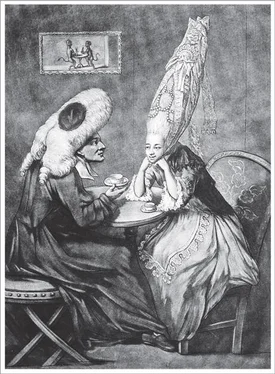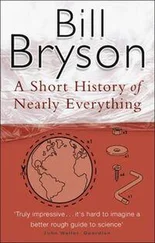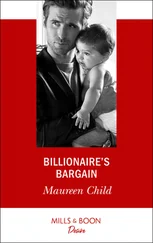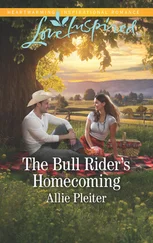Bill Bryson - At Home
Здесь есть возможность читать онлайн «Bill Bryson - At Home» весь текст электронной книги совершенно бесплатно (целиком полную версию без сокращений). В некоторых случаях можно слушать аудио, скачать через торрент в формате fb2 и присутствует краткое содержание. Жанр: Старинная литература, на английском языке. Описание произведения, (предисловие) а так же отзывы посетителей доступны на портале библиотеки ЛибКат.
- Название:At Home
- Автор:
- Жанр:
- Год:неизвестен
- ISBN:нет данных
- Рейтинг книги:4 / 5. Голосов: 1
-
Избранное:Добавить в избранное
- Отзывы:
-
Ваша оценка:
- 80
- 1
- 2
- 3
- 4
- 5
At Home: краткое содержание, описание и аннотация
Предлагаем к чтению аннотацию, описание, краткое содержание или предисловие (зависит от того, что написал сам автор книги «At Home»). Если вы не нашли необходимую информацию о книге — напишите в комментариях, мы постараемся отыскать её.
At Home — читать онлайн бесплатно полную книгу (весь текст) целиком
Ниже представлен текст книги, разбитый по страницам. Система сохранения места последней прочитанной страницы, позволяет с удобством читать онлайн бесплатно книгу «At Home», без необходимости каждый раз заново искать на чём Вы остановились. Поставьте закладку, и сможете в любой момент перейти на страницу, на которой закончили чтение.
Интервал:
Закладка:
Inevitably, a sexual dimension became attached to corset wearing. The tone of anticorset literature for women was strikingly similar to the tone of antimasturbation literature for men. By restricting blood flow and compressing organs in the vicinity of the reproductive zone, corsets, it was feared, could lead to a tragic increase in “amative desires” and possibly even induce involuntary “voluptuous spasms.” Gradually, clothing fears extended to every part of the body where clothes were worn snugly. Even tight-fitting shoes, it was suggested, could engender some dangerous tingling, if not a full-throttled, table-rattling spasm. In the worst cases, women could actually be unhinged by their clothing. Orson Fowler, author of an attack tantalizingly entitled Tight-Lacing, Founded on Physiology and Phrenology; or, the Evils Inflicted on the Mind and Body by Compressing the Organs of Animal Life, Thereby Retarding and Enfeebling the Vital Functions , propounded the theory that the unnatural distortion of circulation pushed extra blood to the woman’s brain and could thereby cause a permanent and disturbing change in personality.
The one place where there really was danger from tight corsets was in the development of babies. Many women wore corsets perilously deep into pregnancy, even pulling them tighter to hide for as long as possible the indelicate evidence that they had been party to an unseemly burst of voluptuous spasms.
Victorian rigidities were such that ladies were not even allowed to blow out candles in mixed company, as that required them to pucker their lips suggestively. They could not say that they were going “to bed”—that planted too stimulating an image—but merely that they were “retiring.” It became effectively impossible to discuss clothing in even a clinical sense without resort to euphemisms. Trousers became “nether integuments” or simply “inexpressibles” and underwear was “linen.” Women could refer among themselves to petticoats or, in hushed tones, stockings, but could mention almost nothing else that brushed bare flesh.
Behind the scenes, however, things were a little spicier than we are sometimes led to suppose. Chemical dyes—some of them quite rich and colorful—became available in midcentury and one of the first places they appeared was on underclothes, a matter that scandalized many since it raised the obvious question of for whose delight all that color was intended. The embroidery of underwear became similarly popular and identically scandalous. In the very year that it was praising an English girls’ school for keeping the young ladies murderously strapped into corsets for a week at a time, The Englishwoman’s Domestic Magazine was also railing that “the amount of embroidery put upon underclothing nowadays is sinful; a young lady spent a month in hemstitching and embroidering a garment which it was scarcely possible that any other human being, except her laundress, would ever see.”
One thing Victorian women didn’t have were brassieres. Corsets pushed up from below, which held breasts in place, but for true comfort (I am told) breasts are better held up by slings. The first person to see this was a lingerie manufacturer named Luman Chapman, of Camden, New Jersey, who secured a patent in 1863 for “breast puffs”—a kind of early halter top. Between 1863 and 1969, exactly 1,230 patents on bras were taken out in the United States. The word brassière , from a French word meaning “upper arm,” was first used in 1904 by the Charles R. DeBevoise Company.
One small but tenacious myth may be demolished here. It has been sometimes written that the bra was the invention of one Otto Titzling. In fact, if such a person ever existed, he played no part in the invention of foundation garments. And on that slightly disappointing note, we may move on to the nursery.
* Overcome with grief, her husband buried her with a sheaf of poems that he had failed to copy; seven years later he thought better of the gesture, had the grave dug up, and retrieved the poems, which were published the following year.
• CHAPTER XVIII •
THE NURSERY
I
In the early 1960s, in a hugely influential book called Centuries of Childhood , a French author named Philippe Ariès made a startling claim. He declared that before the sixteenth century, at the very earliest, there was no such thing as childhood. There were small human beings, of course, but nothing in their lives made them meaningfully distinguishable from adults. “The idea of childhood did not exist,” he pronounced with a certain finality. It was essentially a Victorian invention.
Ariès was not a specialist in the field, and his ideas were based almost entirely on indirect evidence, much of it now held to be a little doubtful, but his views struck a chord and were widely taken up. Soon other historians were declaring that children before the modern period were not just ignored but actually weren’t much liked. “In traditional society, mothers viewed the development and happiness of infants younger than two with indifference,” declared Edward Shorter in The Making of the Modern Family (1976). The reason for this was high infant mortality. “You couldn’t permit yourself to become attached to an infant that you knew death might whisk away,” he explained. These views were almost exactly echoed by Barbara Tuchman in the best-selling A Distant Mirror two years later. “Of all the characteristics in which the medieval age differs from the modern,” she wrote, “none is so striking as the comparative absence of interest in children.” Investing love in young children was so risky—“so unrewarding” was her curious phrase—that everywhere it was suppressed as a pointless waste of energy. Emotion didn’t come into it at all. Children were merely “a product,” in her chilling view. “A child was born and died and another took its place.” Or as Ariès himself explained, “The general feeling was, and for a long time remained, that one had several children in order to keep just a few.” These views became so standard among historians of childhood that twenty years would pass before anyone questioned whether they might represent a serious misreading of human nature, not to mention the known facts of history.
There is no doubt that children once died in great numbers and that parents had to adjust their expectations accordingly. The world before the modern era was overwhelmingly a place of tiny coffins. The figures usually cited are that one-third of children died in their first year of life and half failed to reach their fifth birthdays. Even in the best homes death was a regular visitor. Stephen Inwood notes in A History of London that the future historian Edward Gibbon, growing up rich in healthy Putney, lost all six of his siblings in early childhood. But that isn’t to say that parents were any less devastated by a loss than we would be today. The diarist John Evelyn and his wife had eight children and lost six of them in childhood, and were clearly heartbroken each time. “Here ends the joy of my life,” Evelyn wrote simply after his oldest child died three days after his fifth birthday in 1658. The writer William Brownlow lost a child each year for four years, a chain of misfortune that “hast broken me asunder and shaken me to pieces,” he wrote, but in fact, he and his wife had still more to endure: the tragic pattern of annual deaths continued for three years more until they had no children left to yield.
No one expressed parental loss better (as no one expressed most things better) than William Shakespeare. These lines are from King John , written soon after Shakespeare’s son Hamnet died at the age of eleven in 1596:
Grief fills the room up of my empty child ,
Читать дальшеИнтервал:
Закладка:
Похожие книги на «At Home»
Представляем Вашему вниманию похожие книги на «At Home» списком для выбора. Мы отобрали схожую по названию и смыслу литературу в надежде предоставить читателям больше вариантов отыскать новые, интересные, ещё непрочитанные произведения.
Обсуждение, отзывы о книге «At Home» и просто собственные мнения читателей. Оставьте ваши комментарии, напишите, что Вы думаете о произведении, его смысле или главных героях. Укажите что конкретно понравилось, а что нет, и почему Вы так считаете.












